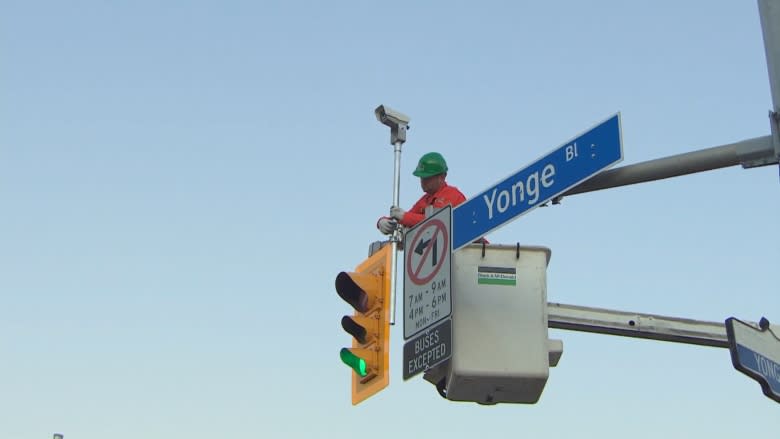Toronto's new 'smart' traffic lights will sense congestion and adjust themselves
To cut down on congestion and improve traffic flow, the city is piloting two kinds of responsive, high-tech traffic signals that monitor and adjust to traffic in real-time.
The first of these signals was installed on Friday morning at the intersection of Yonge Street and Yonge Boulevard, south of Wilson Avenue.
"Today is one of those days where we're able to take a step forward on something that's been talked about for many years," Mayor John Tory said on Friday.
The new signal is governed by U.S. technology called InSync, which watches the intersection via video and senses when long lines of cars are lined up at the light.
InSync signals will be installed in nine other locations, stretching south on Yonge to Castlefield Avenue.
In Scarborough, different technology is being used at 12 intersections on Sheppard Avenue East between Neilson and Meadowvale Roads. Called SCATS, it uses radar to measure traffic flow.
Those installations will take place over "the next few weeks," Tory said, and it will cost between $100,000 and $150,000 per intersection. After the pilot project concludes, the city will compare which technology worked better.
Unlike traditional traffic lights, which change at pre-set times based on the time of day, both technologies allow individual traffic signals to communicate with each other and adjust as a unit to changing conditions.
"The operative word in the old infrastructure is that it's fixed. The real benefit of this new technology is that it's flexible," Tory said.



